Looking for an Olympic edge in the lab
Published on November 7th, 2022
While the cost of Olympic equipment is a fraction of campaign costs, it remains a significant expense. More so, despite one design class oversight, tight measurement tolerances, and approved builders, not all gear is the same.
As World Sailing selects the equipment used in the Olympic Games, a paper presented at the 2022 Annual Conference introduced the issue:
———–
The quality of Olympic sailing equipment is an important subject as there are a number of associated threats to the sport:
• Cost implications: quality issues result in increased costs of Olympic campaigns, creating financial barriers to sailors and risking accessibility and participation.
• Sustainability implications: quality dictates the frequency of replacements and the purchasing behavior of those seeking the best-performing equipment.
• Integrity and fairness: a level playing field requires equalized equipment (where intended), equal opportunity to access equipment as well as the means to validate production and identify equipment manipulation.
———–
The conclusion of the paper offered a grim conclusion, expressing an urgency for World Sailing to increase its focus on the quality of Olympic equipment, noting how this situation has critical consequences to the sport with the current state in some cases being considered unsustainable.
Depending on the boat, anyone seriously competing in one design classes has seen variance in critical areas. For the Swedish National Team competing in the Olympic Mixed Multihull event, that includes studying the blades on the Nacra 17 used for the event. Lovisa Håkansson provides this report on how they are looking for an edge:
We found ourselves at SSPA, the now RISE-owned maritime research and ship testing facility located at the Chalmers University of Technology. From the outside, a fairly inconspicuous brick building. But on the inside – among huge tanks, workshop halls and laboratories – marine research at highest level is taking place.
Here we’re met by Arash Eslamdoost, Associate Professor in applied hydrodynamics at Chalmers, and Laura Marimon Giovannetti, researcher and project manager at SSPA. Together, they’ve developed a unique method to simulate and predict with great precision how hydrofoils behave in the water under a range of different conditions.
Their research is of great interest to the shipping industry, which with the use of further developed hydrofoils can benefit electric vessels also over longer distances – while at the same time making the shipping industry significantly greener. How?
“As the hydrofoils, like wings, lift up the boat hull and make the boat “fly” over the water surface, the resistance is reduced by as much as 80 %. Less drag means longer range for a battery fueled ship,” Arash explains.
It also means that the speed of the boat can increase significantly. A phenomenon that sailing has already discovered. In recent years, hydrofoiling technology has revolutionized the sport, where the sailors today reach much higher speeds than they used to. The research that takes place at SSPA and Chalmers is hence of great interest to the competitive sailing community. And Laura’s interest in hydrofoils is far from a coincidence.
“I’ve previously competed in both the Italian and British national sailing teams and today I’m working as a technical advisor for the Swedish Olympic Committee and coach the Swedish teams,” she says.
In her role, Laura technically advises the Swedish national sailing team in four different classes. One of the teams consists of sailors Ida Svensson and Marcus Dackhammar and they are at the research facility to, with Laura’s help, make advanced measurements on their Nacra 17 hydrofoils in the hope of optimizing their sailing.
“Previously, we only foiled downwind, but with the new rudder system introduced after Tokyo 2020, we are now able to fly upwind also, so going up against the wind, which means an increase in speed from about 10-11 knots to about 15 knots. In other words, an almost 50 % speed increase,” Marcus explains.
Above all, it’s the hydrofoil stiffness that the team is interested in measuring at SSPA’s facility. Ida and Marcus buy the foils from the boat manufacturer NACRA, but in order to find the hydrofoils with the best characteristics for sailing, they need to combine testing in the lab with testing in real life.
“We’re here to measure the stiffness of the rudders and the daggerboards, which are a big part of making the boat go faster,” Marcus explains. Ida adds, “The faster we go, the more important it becomes to have the right equipment. NACRA is a catamaran, and if we know in which side we sail faster, then we can find out which degree of stiffness results in the fastest speed.”
In the center of attention for the foil testing is a measurement method that makes it possible to study the foils’ stiffness at a detailed level and see how they’re affected if, for example, the load or speed increases or when the positioning of the foil changes.
In the lab, the foils are “set in place” into a device and weights are attached to increase the load. Three advanced cameras document even the smallest changes in the hydrofoil and send the data directly to a computer where Marcus, Ida, and Laura can see the results in real time, both in numbers and in 3D illustration.
It’s a fine balancing act. The stiffer the hydrofoil, the higher the boat “flies” and the speed increases. But if the boat flies too high, the foils start to ventilate, which in turn may result in abrupt speed loss, slamming and risk of injury.
“We’ve tested a range of foils that have had a difference of 15% in stiffness and we can see that it’s a factor that makes a difference,” explains Marcus. “Then, of course, it’s difficult to rule out other factors, such as waves, water temperature, or how we behave on the boat, that is the human factor, which also might influence the sailing.”
Marcus and Ida have already noticed that the measurement in the lab pays off in their sailing. It’s not the team’s first visit to the facility.
“We were here last spring and tested the foils we had then,” says Ida. “Now, we’ve bought new gear that we’d like to test. During this year, we’ve taken a big step forward in our sailing and now our eyes are set on the Olympics in Paris 2024 and after that the Olympics 2028 in Los Angeles.”
Although the tests that can be carried out at SSPA may be considered somewhat unique, it’s most likely that other nations also conduct similar tests on their foils. But exactly how is shrouded in obscurity.
“There’s nowhere else we can get this data from,” notes Ida. “Thanks to Laura, we can connect the research done here to reality. It’s very likely that our competitors from other countries also do tests, but no one wants to share what technology they use or what the results look like.”
After Ida and Marcus have completed their tests, a longer training trip to Lanzarote awaits this winter, where they will also have the opportunity to compare these latest measurement results with how the foils perform in the water. The competition season starts in April and then the Olympics in Paris 2024 looms.
Paris 2024 Olympic Sailing Program:
Men’s One Person Dinghy – ILCA 7
Women’s One Person Dinghy – ILCA 6
Mixed Two Person Dinghy – 470
Men’s Skiff – 49er
Women’s Skiff – 49erFx
Men’s Kiteboard – Formula Kite Class
Women’s Kiteboard – Formula Kite Class
Men’s Windsurfing – iQFoil
Women’s Windsurfing – iQFoil
Mixed Multihull – Nacra 17
Venue: Marseille, France
Dates: July 26-August 11
Details: https://www.paris2024.org/en/the-olympic-games-paris-2024/


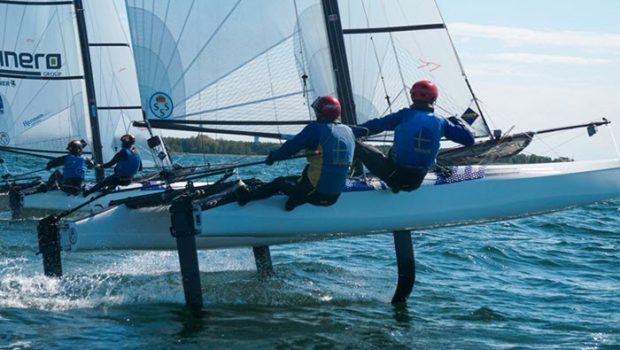

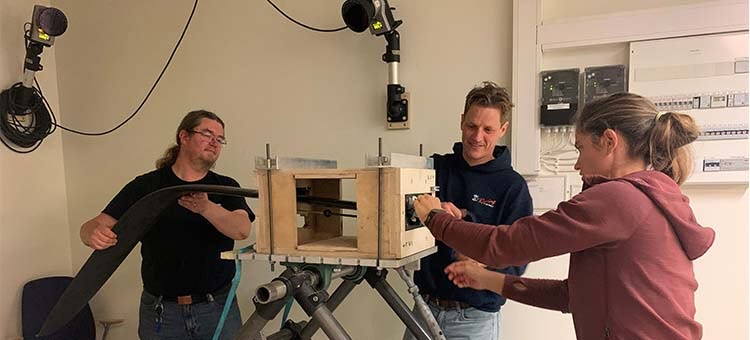

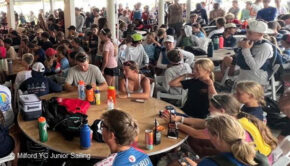

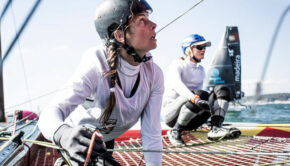
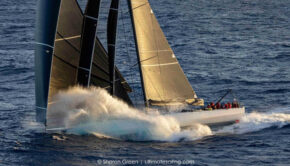
 We’ll keep your information safe.
We’ll keep your information safe.